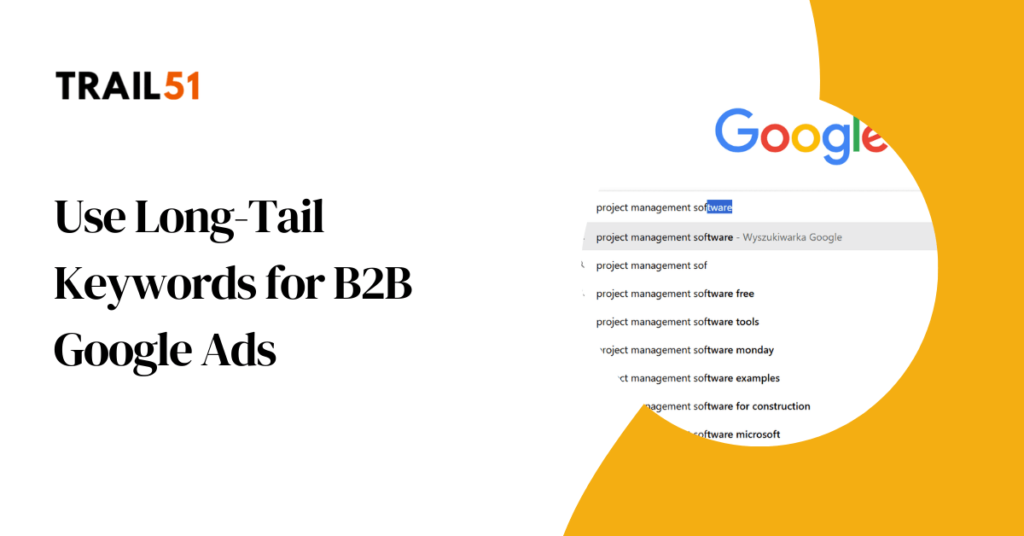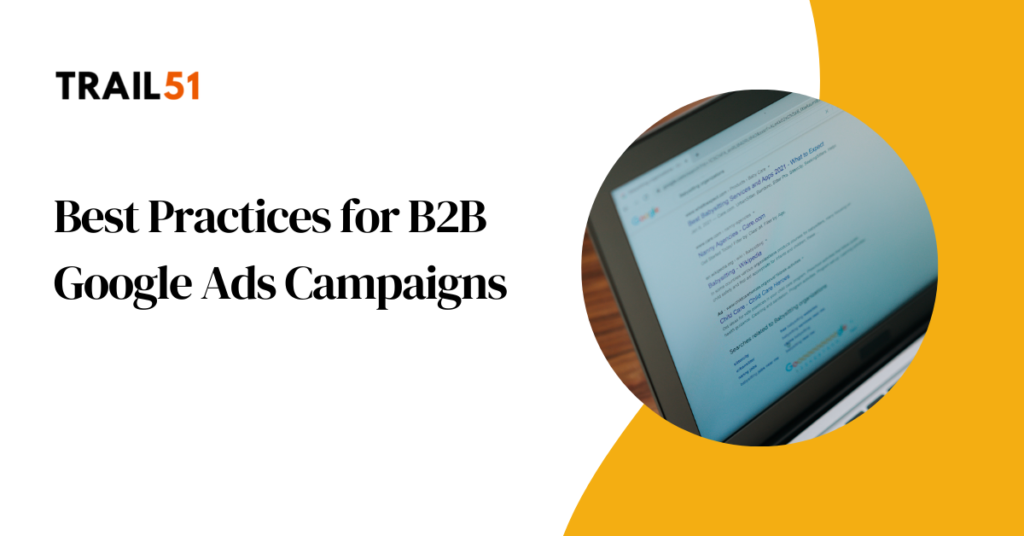`
Key takeways
- Capture precise intent with long-tail keywords in B2B Google Ads.
- Create content for different industry sectors using targeted keywords.
- Enhance ad performance by layering keywords with custom audience targeting.
- Regularly test ads, use experiments functions and utilize ad extensions to improve visibility
Introduction
In B2B marketing, long-tail keywords offer a unique advantage in Google Ads campaigns. These phrases are more specific and targeted, allowing businesses to reach potential clients with precise search intent.
By focusing on long-tail keywords, B2B marketers can achieve higher conversion rates while efficiently managing their advertising budgets. This guide provides essential strategies for effectively utilizing long-tail keywords in B2B Google Ads to ensure success.
Understanding the Importance of Long-Tail Keywords in B2B Marketing
What Are Long-Tail Keywords?
Long-tail keywords are specific search terms usually consisting of three or more words. They are more detailed than general keywords, capturing a user’s exact search intent. For example, instead of using the broad term “project management software,” a long-tail keyword would be “project management software for startups”
Why Long-Tail Keywords Matter for B2B
Using long-tail keywords in B2B marketing is beneficial because they attract a more refined audience, like industry professionals seeking specific solutions. These keywords have lower competition and cost-per-click (CPC), leading to better conversion rates because they drive highly targeted traffic to your site.
In summary, long-tail keywords help connect with the precise needs and intentions of a B2B audience, offering a cost-effective approach to drive quality leads.
Identifying Specific Pain Points Through Keywords
Focusing on Problem-Awareness Terms
Discovering keywords that reflect specific business challenges is essential. These are terms that potential clients might use when searching for solutions to their problems. Examples include “enterprise workflow automation solutions” or “best project management software for agencies”
Targeting Technical Specification Searches
In B2B marketing, it’s crucial to target keywords related to technical requirements and integration needs. For instance, “SaaS security compliance requirements” or “CRM integration with accounting software” are searches that indicate a potential client’s specific needs.
By identifying these keywords, businesses can tailor their marketing strategies to better address their audience’s pain points effectively.
Tailoring Keywords to Industry Segments
Creating Industry-Specific Content
To leverage long-tail keywords successfully, it’s important to tailor your content to various industry segments. This involves developing service pages for distinct sectors and incorporating relevant long-tail phrases.
For example, if offering a social media tool, create landing pages for individual businesses and social media agencies even with dynamic LP headlines based on users searches.
Utilizing Keyword Tools for Industry Insights
Use free keyword tool withing google ads interface to discover industry-specific long-tail keywords that address the pressing questions and needs within each sector. These insights allow businesses to create content that resonates with their audience, driving more relevant traffic.
Tailoring your content with industry-relevant keywords ensures your message aligns with the unique requirements and interests of different sectors.
Layering Keywords with Custom Audiences
Combining Long-Tail Keywords with Audience Targeting
Layering long-tail keyword strategies with custom audience targeting can improve ad effectiveness. Focus on key decision-makers and those who have previously visited your website. This approach refines who sees your ads, ensuring they are relevant to your audience.
Interest-Based Targeting on Display Network
Enhance your ad campaigns by using interest-based targeting along with demographic and placement data, e.g. with Demand Gen or Youtube campaigns. This strategy allows for a more precise reach, matching your ads with those most likely to be interested in your offerings.
By integrating keywords with custom audience parameters, B2B marketers can ensure their ads are ultra-targeted and relevant.
Frequently Asked Questions
Long-tail keywords enhance B2B ad performance by allowing for precise targeting. This results in higher conversion rates and lower CPCs due to reduced competition and targeted traffic.
Tools like Google Keyword Planner, SEMrush, and Ahrefs are valuable for identifying relevant long-tail keywords tailored to your industry and audience.
Review and update your keyword strategy regularly, ideally every quarter. This ensures your approach stays aligned with market trends and evolving customer search behaviors.
Conclusion
Incorporating long-tail keywords into your B2B Google Ads strategy is vital for effectively reaching professional audiences. By refining your keyword strategy, you can drive more qualified leads and achieve successful B2B marketing outcomes.



